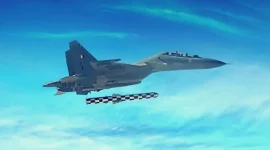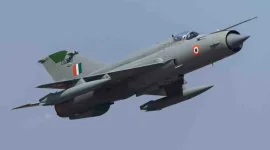- Views: 1K
- Replies: 2
The Indian Air Force (IAF) has confirmed that its Russian-made S-400 Triumf air defence system successfully destroyed six Pakistani aircraft during 'Operation Sindoor' in May 2025, including a significant target at a record-breaking distance of 300 kilometres inside Pakistani airspace.
The announcement, made by IAF Chief Air Chief Marshal Amar Preet Singh on August 9, 2025, highlights a major milestone in India's military capabilities and sets the stage for an even more advanced air defence network.
The confirmed success of the S-400 has solidified India's plans to create a multi-layered, long-range shield.
New Delhi is now actively pursuing Russia's next-generation S-500 Prometheus system while simultaneously developing its own indigenous long-range missile system under 'Project Kusha'.
This strategic combination aims to give India the ability to dominate the airspace by targeting critical Pakistani assets like fighter jets, airborne command centres (AWACS), and refuelling aircraft from well within Indian territory.
Details of Operation Sindoor
'Operation Sindoor', which was launched in response to a terrorist attack in Kashmir, demonstrated the S-400's formidable power. Air Chief Marshal Singh reported that the system downed five fighter jets and a large surveillance aircraft, believed to be an AWACS or a similar platform.The engagements occurred at standoff ranges, with most targets neutralized beyond 150 km. The 300 km kill marks a new world record for a surface-to-air missile engagement.
By deploying the S-400 along the border, the IAF was able to enforce a no-fly zone over critical areas of Pakistan without risking its own pilots in combat.
While Pakistan has officially rejected the claims as "comical" and suggested a mutual inspection of military inventories, defence analysts note that the operation likely caused significant disruption to Pakistani air activity.
The S-400's performance has also silenced domestic critics who had raised questions about its effective integration into India's defence framework.
The Next Generation: S-500 and Project Kusha
Building on this success, India is advancing its plans to acquire the S-500 Prometheus.With a reported engagement range of up to 600 km for aircraft and 500 km for ballistic missiles, the S-500 is a significant upgrade.
It is also designed to intercept hypersonic threats travelling at speeds of up to Mach 20, a capability far beyond the S-400's limit.
Russia has reportedly offered joint development opportunities to India, which would make it the first international partner for the system.
Integrating the S-500 would dramatically extend India's defensive reach against advanced threats from both Pakistan and China.
Complementing this foreign procurement is India's 'Project Kusha', a high-priority indigenous program led by the Defence Research and Development Organisation (DRDO).
The project aims to build a domestic long-range surface-to-air missile (SAM) system with interceptors capable of hitting targets at 150 km, 250 km, and 350 km.
A prototype is expected within the next 12 to 18 months, with the system slated to be fully operational by 2030.
Project Kusha is designed to reduce reliance on foreign military hardware and will be integrated with the S-400 and S-500 systems to form a comprehensive, layered defence network.
Pakistan's Strategic Disadvantage
A key factor amplifying the impact of these systems is Pakistan's geography. The country's narrow east-west corridor means that many of its major airbases and strategic assets are located within 200-400 km of the Indian border.This lack of "strategic depth" makes it difficult to protect high-value assets like AWACS and aerial tankers from long-range missile strikes. The events of 'Operation Sindoor' have proven this vulnerability.
The planned introduction of the S-500 and Project Kusha will further expose these critical assets, potentially allowing India to neutralize them before they can be effectively used in a conflict.
The combination of the operational S-400, the planned S-500, and the indigenous Project Kusha signals a fundamental shift in India’s air defence posture—from a reactive force to one capable of proactive dominance over the skies.
For regional stability, this emerging "impenetrable shield" creates a powerful deterrent against future aggression.




